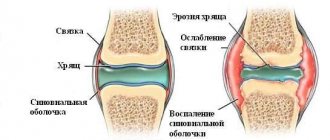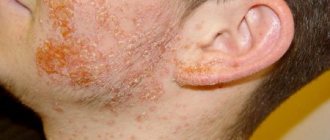Keratoconjunctivitis is different from normal conjunctivitis complexity of the infection. In the case of simple conjunctivitis, the conjunctiva of the eye is affected, and in the case of keratoconjunctivitis, the infection also targets the cornea. An inflammatory disease of the cornea is called keratitis, and with inflammation of the conjunctiva, conjunctivitis occurs - hence the complex name with simultaneous effects on the cornea and conjunctiva.
As in the case of simple conjunctivitis, the development of keratoconjunctivitis begins with damage to one eye, but then a transition to the second is possible. Symptomatic features (due to inflammation of the cornea) include pinching of the mucous membrane of the eye over the eyelids. An extremely unpleasant symptom.
Lymph nodes may also become enlarged and clouding of the cornea may occur. Otherwise, the symptoms are typical for conjunctivitis.
Causes
There are many potential causes, both infectious and non-infectious. These include:
- allergens;
- viruses;
- bacteria;
- parasites;
- pollutants;
- genetic conditions;
- autoimmune disorders.
Most cases of conjunctivitis and keratoconjunctivitis are associated with allergies. When it comes to infections, viruses are the most common among all age groups. Bacterial conjunctivitis is more common in children.
Pharyngoconjunctival fever
FCL, not recognized in EKC, manifests as acute follicular conjunctivitis, accompanied by upper respiratory tract infection and fever. Clinically, conjunctivitis proceeds like EKC, but the severity of punctate epithelial keratitis, as well as subepithelial infiltrates, is much less.
In cases of chronic keratitis, adenovirus is rarely sown, without or with conjunctivitis, up to 32 weeks from the onset of the disease. Chronic complications, including the formation of symblepharon and closure of the lacrimal duct due to pinpoint or canalicular blockage, occur rarely in severe membranous adenoviral conjunctivitis.
Types of keratoconjunctivitis
Keratoconjunctivitis sicca
Tears are made up of water, fatty oils and mucus. Dry eye syndrome can occur due to:
- imbalance in the tear mixture;
- does not produce enough tears;
- tears evaporate too quickly.
Epidemic keratoconjunctivitis
Epidemic keratoconjunctivitis is an eye infection caused by a human adenovirus. It is also called viral keratoconjunctivitis or adenoviral keratoconjunctivitis.
Epidemic keratoconjunctivitis has a long incubation period and is highly contagious. This is why large outbreaks occur all over the world. It spreads easily where people are in close quarters, such as schools, hospitals and even doctors' offices.
Symptoms usually last several weeks before they go away. Adenoviruses also affect the respiratory, digestive and genitourinary tracts.
Phlyctenular keratoconjunctivitis
Phlyctenular keratoconjunctivitis is triggered by microbial antigens. This includes staph, tuberculosis and chlamydia.
One of the key symptoms is the formation of nodules. This can make you feel like there is something in your eyes.
Vernal keratoconjunctivitis
Vernal keratoconjunctivitis is a severe chronic allergic inflammation of the eyes. This can result in small, round bumps that tend to affect the upper eyelid more than the lower eyelid.
The cause is not always clear, but it may also involve genetic and immune system disorders. This can happen to anyone.
Atopic keratoconjunctivitis
Atopic keratoconjunctivitis is caused by a genetic condition called atopy. Atopy increases the likelihood of developing allergies. Men get the condition more often than women, and it affects the lower eyelid more than the upper eyelid.
Symptoms are usually worse in winter. Without treatment, it can lead to serious complications such as:
- ulcer formation;
- keratoconus, which thins and protrudes from the cornea;
- Corneal vascularization, which is the growth of new blood vessels into the cornea.
Herpetic keratoconjunctivitis
Herpetic keratoconjunctivitis is an infection caused by the herpes simplex virus, especially type 1. One way to get it is by touching your eye after touching a cold sore near your mouth.
Superior limbic keratoconjunctivitis
Superior limbic keratoconjunctivitis is a chronic, recurrent inflammation of the eyes. The reason is unknown. It is rare and affects women more often than men. Symptoms develop slowly over a period of 1 to 10 years.
Neurotrophic keratoconjunctivitis
Neurotrophic keratoconjunctivitis is a rare degenerative eye disease caused by nerve damage. This can cause a loss of sensation in the cornea, so you probably won't have any pain. This may damage the cornea. This is a progressive condition, so early intervention is critical.
Allergic keratoconjunctivitis
Allergic keratoconjunctivitis refers to any keratoconjunctivitis caused by an allergen. For example, this group includes vernal and atopic keratoconjunctivitis. Allergies can occur seasonally or throughout the year.
Kinds
In medical practice we encounter:
- viral keratoconjunctivitis, it is caused by herpes, citalomegalovirus, adenovirus and other varieties of these microorganisms;
- bacterial (infectious), develops mainly against the background of eye damage by staphylococci, streptococci, chlamydia, less often - tuberculosis bacillus, Proteus, treponema pallidum, protozoan microorganisms;
- fungal, develops due to the proliferation of sporadic microorganisms on the mucous membrane of the eyes;
- dry, it is caused by diseases of the lacrimal canal or external influences that cause dryness and lack of moisture in the ocular mucous membranes.
- parasitic, when inflammation is caused by micromites or helminths;
- atopic, which occurs in conjunction with skin lesions (dermatitis), is considered an allergic pathology that is inherited;
- chemical, when the disease occurs due to exposure to harmful substances (hydrogen sulfide, chlorine, etc.) on the eye.
Symptoms of keratoconjunctivitis
Symptoms range from mild to quite severe. They vary depending on the cause. Some symptoms associated with keratoconjunctivitis include:
- redness;
- swollen eyelids;
- stickiness;
- dryness;
- photosensitivity;
- burning;
- itching;
- feeling that there is something in the eyes;
- slight blurring of vision.
Definition of disease
Adenoviral keratoconjunctivitis is a disease that affects the conjunctiva and cornea of the eyeball. Complications are very dangerous and can have dire consequences. There may even be loss of vision. This disease is the result of infection with an adenovirus, as a result of which the eye becomes inflamed. Most often, infection occurs through contact with a person who already carries this virus, but cases of infection are possible during examination of the visual organ.
Diagnostics
Call your doctor if you don't know why your eyes are sore or if you:
- suspect an eye infection;
- see no signs of improvement after a week;
- splashed something dangerous into the eyes;
- hurt my eye.
Be sure to indicate whether you wear contact lenses or use eye drops or other eye products. Tell your doctor if you have a pre-existing condition that may make you more prone to vision problems, such as genetic or autoimmune diseases.
In some cases, the diagnosis can be made based on your medical history, symptoms, and visual examination of the eyes. Depending on the initial results, your doctor may also want to check:
- visual acuity;
- eyelids;
- eye pressure;
- pupillary reactions;
- cornea.
In some cases, you may need to undergo tests for:
- allergens;
- viruses;
- autoimmune diseases;
- genetic predisposition.
Our advantages
"Moscow Eye Clinic" offers comprehensive diagnostics and effective treatment of various eye diseases. The use of the most modern equipment and the high professional level of specialists working in the clinic eliminate the possibility of diagnostic errors.
Based on the results of the examination, each visitor will be given recommendations on choosing the most effective methods of treating the eye pathologies identified in them. By contacting the Moscow Eye Clinic, you can be sure of quick and accurate diagnosis and effective treatment.
The highest level of theoretical training and extensive practical experience of our specialists guarantees the achievement of the best treatment results.
Treatment of keratoconjunctivitis
Treatment depends on the cause and severity of symptoms.
Avoid spreading to others
Some types of keratoconjunctivitis are highly contagious. You can minimize the chance of spreading it by washing your hands well and often, especially after touching your face. Do not use eye products, eye drops, or towels with anyone.
Before you see a doctor
When your eyes are irritated, it's difficult to think about anything else. Even if you have an appointment with your doctor, you'll want relief as soon as possible.
The urge to rub your itchy eyes can be strong, but it's important to fight this impulse. Rubbing and scratching can make the situation worse. Ways to calm symptoms include:
- give your eyes a break from contact lenses;
- avoid allergens;
- do not smoke and stay away from secondhand smoke;
- apply a cold or warm compress for 10 minutes;
- use a scrub every day to remove irritants and allergens;
- humidify the air;
- Stay away from fans, heaters and vents, which can dry out your eyes.
Drug-induced conjunctivitis in a child
The disease can occur acutely (within the first hour after using any drug) and subacutely (within the first day after using the drug). Most often (in 90% of cases) drug-induced conjunctivitis occurs with long-term use of drugs (several days or weeks). An allergic reaction can develop both to the drug itself and to the preservative of eye drops, most often with topical use of antibacterial drugs and local anesthetics.
Acute allergic conjunctivitis is characterized by the appearance of rapidly increasing glassy chemosis and edema of the conjunctiva, severe itching, burning, and copious mucous (sometimes filmy) discharge from the conjunctival cavity. Some areas of the mucous membrane may be eroded. Papillary hypertrophy of the upper eyelid is noted; follicles appear in the area of the conjunctiva of the lower transitional fold and the lower eyelid.











